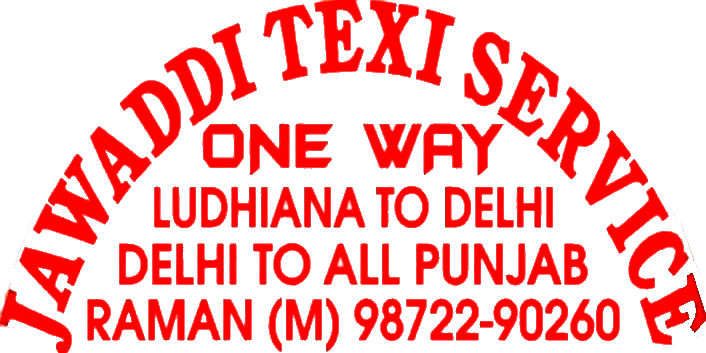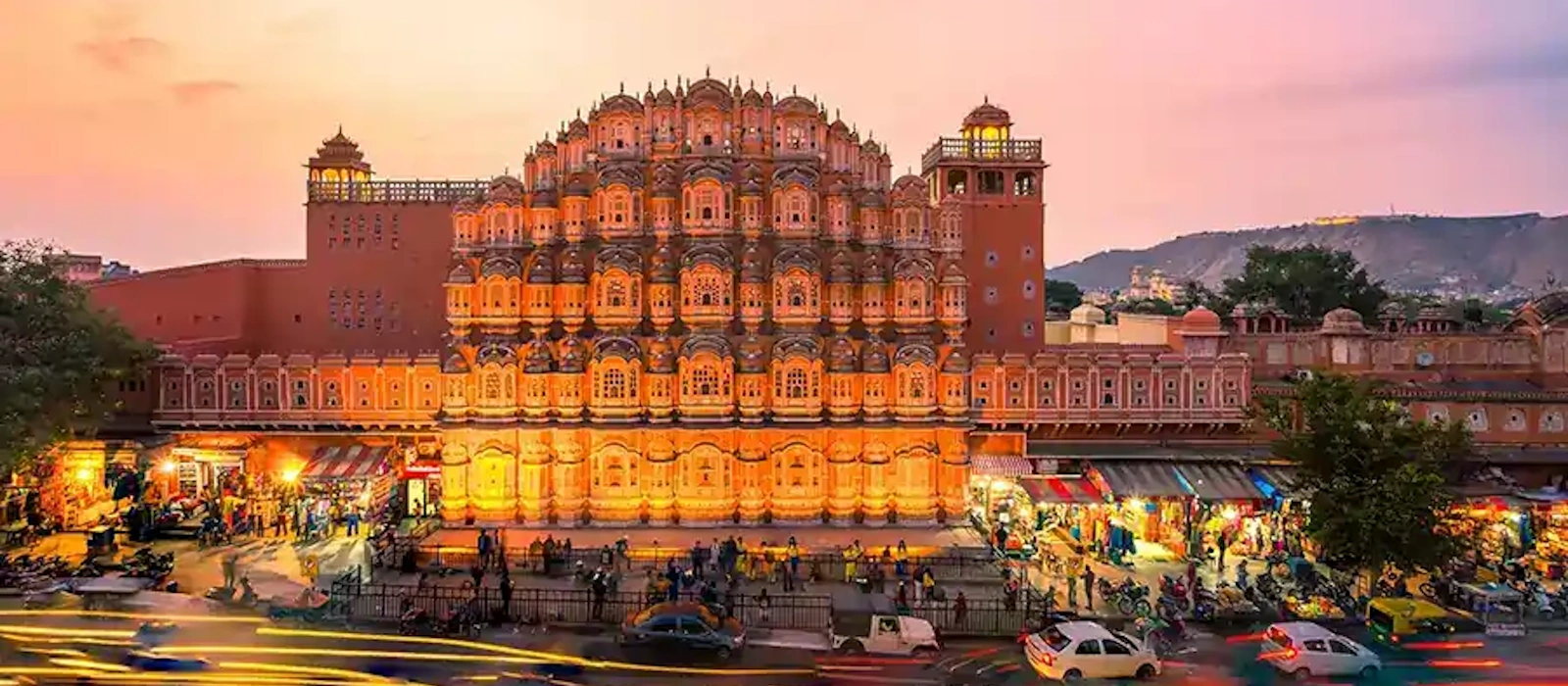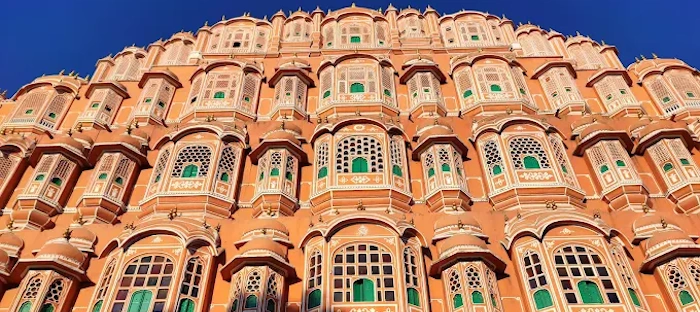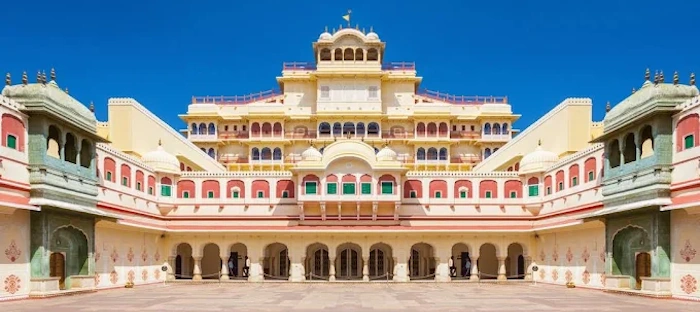Jaipur, also known as the “Pink City,” is the capital of the Indian state of Rajasthan and one of the most vibrant and culturally rich cities in India. Established in 1727 by Maharaja Jai Singh II, Jaipur was designed with great architectural precision, and its name reflects the distinctive pink color of the buildings in its historic city center. Known for its magnificent palaces, forts, temples, and bustling markets, Jaipur is a prime example of traditional Rajput architecture mixed with modern influences. The city is not only a major tourist destination but also an important cultural and economic hub in the state.
Jaipur is renowned for its regal past, and much of its charm lies in its royal palaces and forts. Amber Fort, a UNESCO World Heritage site, is one of the most iconic landmarks in Jaipur. Perched on a hilltop, the fort is a stunning blend of Hindu and Mughal architecture, featuring beautiful courtyards, ornate temples, and intricate carvings. Visitors can explore the palace complex, take elephant rides up to the fort entrance, and enjoy breathtaking views of the surrounding landscapes.
Another must-see fort is Jaigarh Fort, known for housing the world’s largest cannon on wheels, Jaivana Cannon. Situated on the Aravalli hills, it offers panoramic views of Jaipur city and Amber Fort. The fort is a testament to Rajasthan’s military heritage and features impressive architecture, including watchtowers, gardens, and reservoirs.
In the heart of Jaipur stands the City Palace, a sprawling complex that blends Mughal and Rajput styles of architecture. The palace houses several museums, courtyards, and gardens, as well as the royal residence of the former rulers of Jaipur. The Chandra Mahal, located inside the City Palace, is an architectural marvel, and visitors can experience the grandeur of royal life through exhibitions of royal costumes, art, and artifacts.
The Hawa Mahal, or the “Palace of Winds,” is another architectural wonder that defines Jaipur. Built in 1799 by Maharaja Sawai Pratap Singh, this five-story palace is designed with a unique honeycomb structure and 953 small windows that allowed royal women to observe street life without being seen. The pink sandstone facade and intricate latticework make it one of the most photographed landmarks in Jaipur.
For those interested in religious architecture, Jaipur is home to a number of temples that showcase the city’s spiritual heritage. The Birla Mandir, dedicated to Lord Vishnu and Goddess Lakshmi, is a serene marble temple located on the Moti Dungri Hill. Another significant site is the Govind Dev Ji Temple, an important Hindu temple dedicated to Lord Krishna, which is known for its vibrant atmosphere and religious significance.
Jaipur is also famous for its vibrant markets, especially for handicrafts, textiles, jewelry, and pottery. The bustling Johari Bazaar is one of the oldest and most famous markets, known for its exquisite collection of jewelry, particularly traditional Kundan and Meenakari work. Bapu Bazaar and Tripolia Bazaar are also popular shopping destinations for traditional Rajasthani fabrics, clothing, and souvenirs. Visitors can experience the colorful, lively culture of Jaipur as they stroll through these markets, which are a riot of colors, sights, and sounds.
For a taste of Rajasthan’s royal heritage, Albert Hall Museum offers a glimpse into the history and culture of Jaipur and the larger state of Rajasthan. The museum houses an extensive collection of artifacts, including sculptures, paintings, and textiles, and is housed in a magnificent building that blends Indo-Saracenic and Mughal architectural styles.
Jantar Mantar, another UNESCO World Heritage site, is an astronomical observatory built by Maharaja Jai Singh II. It houses a collection of architectural astronomical instruments that were used to study celestial bodies and predict astronomical events. The most impressive feature of Jantar Mantar is the Samrat Yantra, an enormous sundial that can accurately tell time to the nearest second.
Jaipur is also known for its stunning gardens and green spaces. The Ram Niwas Garden, laid out by Maharaja Sawai Ram Singh, is a tranquil park that offers a break from the hustle and bustle of the city. The Sisodia Rani Garden, with its terraced landscapes and fountains, is another beautiful escape for visitors seeking peace and natural beauty.
Jaipur’s food scene is another major attraction, with the city offering an array of Rajasthani delicacies like dal baati churma, gatte ki sabzi, ker sangri, and laal maas. The city’s vibrant street food culture is also a must-try, with snacks like pani puri, samosas, and kachaudi available at local eateries and food stalls. Chokhi Dhani, an ethnic village resort located on the outskirts of Jaipur, offers a cultural experience complete with traditional Rajasthani food, folk dances, and camel rides.
Jaipur is also home to vibrant festivals, including Teej, Gangaur, and Diwali, where the city comes alive with colors, music, and dance. The grand celebrations, along with the cultural and historical landmarks, make Jaipur a city that beautifully represents the rich heritage of Rajasthan.





